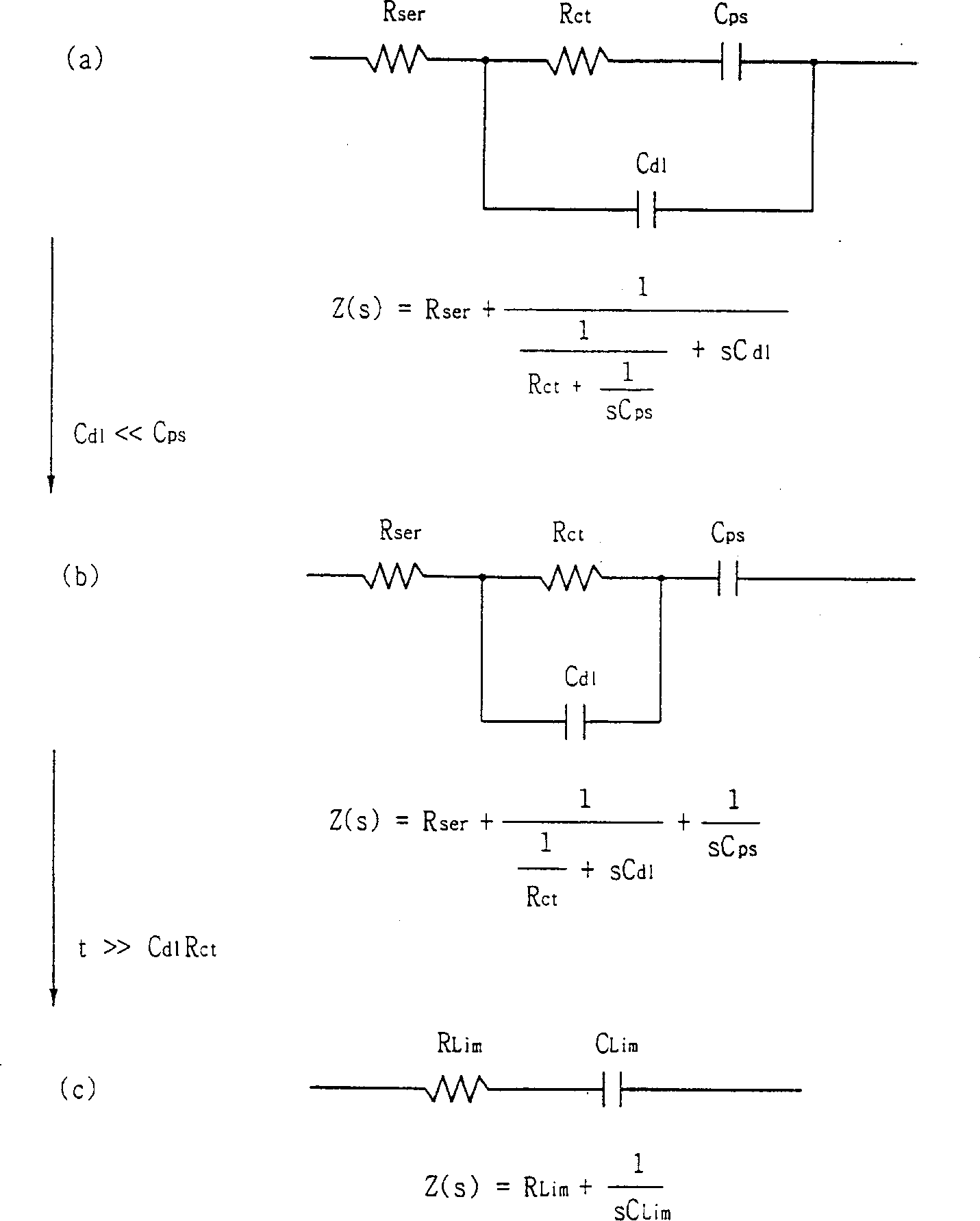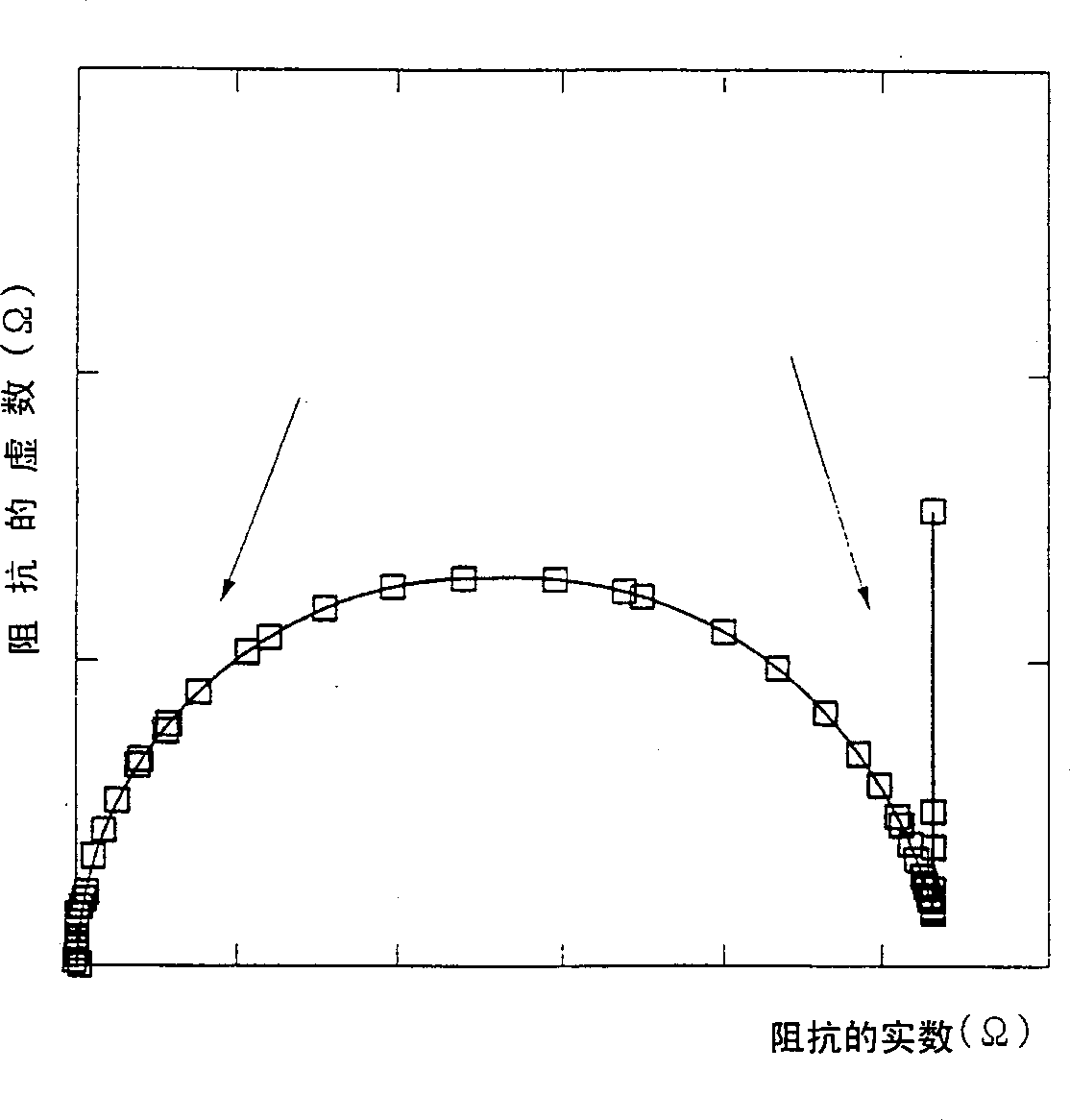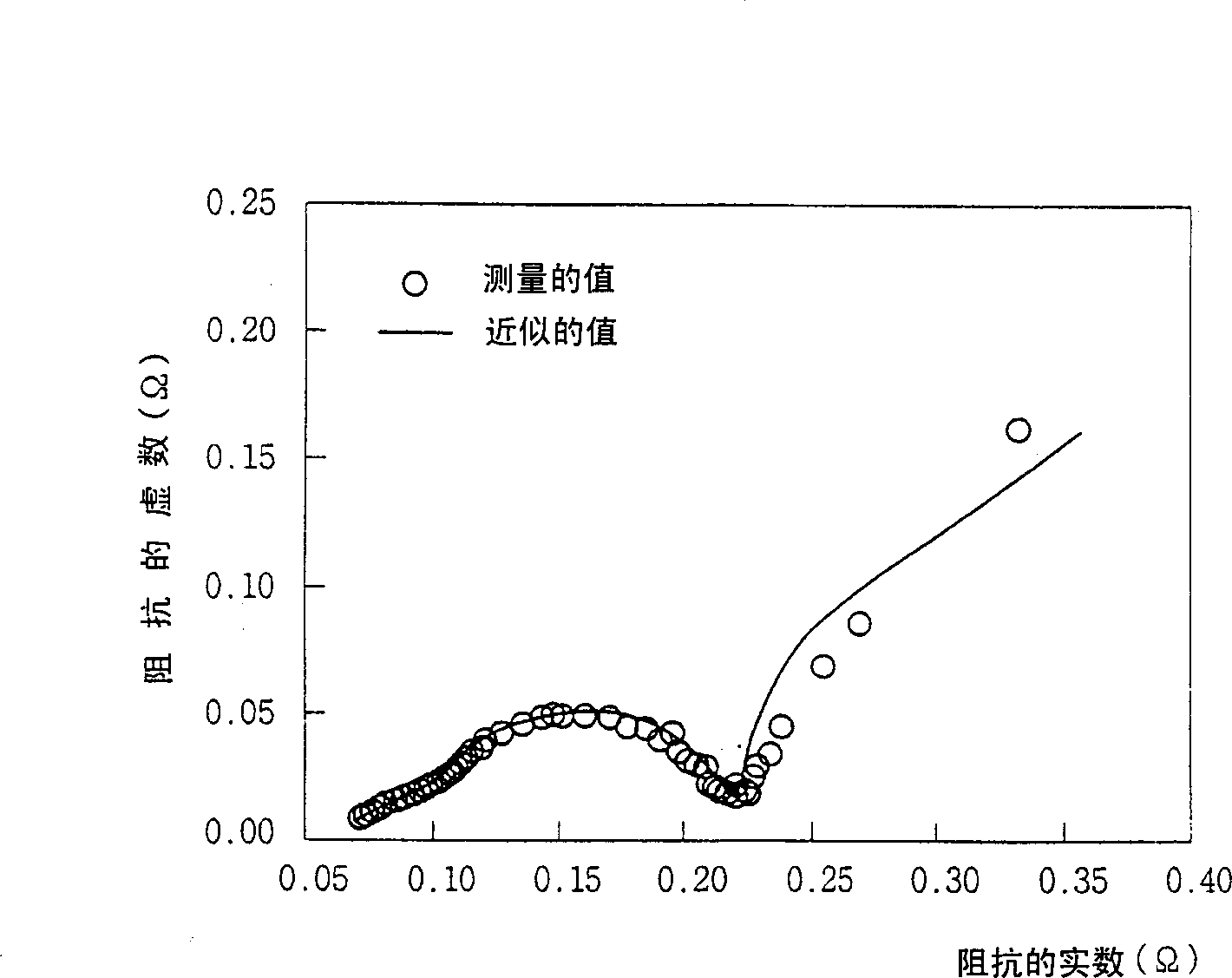Method and apparatus for measuring battery capacity
A battery capacity, battery technology, applied in the measurement of electrical variables, measurement of electricity, measurement of current/voltage and other directions, can solve the problem that the measurement efficiency and related accuracy are difficult to achieve excellent, and achieve the effect of less time-consuming
- Summary
- Abstract
- Description
- Claims
- Application Information
AI Technical Summary
Problems solved by technology
Method used
Image
Examples
Embodiment 1
[0115] Embodiment 1 (comparative example)
[0116] Fabrication of a Fourier transform spectrometer designed to convert, through a 16-bit D / A converter and an electrostatic device (galvanostat), the superposition of multiple sine waves obtained by superimposing the lowest frequency of an odd number of times An input current signal is provided to a battery, and the digital current and voltage signals measured by a two-channel 16-bit A / D converter are sent to a computer, which calculates a complex impedance by using a digital discrete fast Fourier transform algorithm . Here, the pulse current measurement unit is used by storing the pulse input signal to a 16-bit A / D converter.
[0117] Table 1 lists the times required for different measurements of the capacity of a charged battery. In this embodiment, the real-time discharge method, the frequency sweep method performed by selecting a plurality of frequencies at constant intervals in the range of 5mHz to 20KHz, for example, 20, ...
Embodiment 2
[0125] A lithium ion battery (manufactured by Sony Corporation) having a specified capacity of 1300mAh was charged up to a voltage of 4.2V for one hour under room temperature and constant current conditions and fully charged at this voltage for 2.5 hours under constant voltage conditions, Impedance spectra were then measured in the frequency range from 5 mHz to 20 KHz using a Fourier transform impedance spectrometer as described in Example 1.
[0126] To obtain impedance spectra of the same battery under different discharge states, the battery was repeatedly discharged at 130 mAh for 10 hours under constant current conditions and these impedance spectra were continuously measured.
[0127] The impedance spectrum is used with the Figure 4 A composite nonlinear least squares fitting method of the impedance function corresponding to the transmission line equivalent circuit model shown in is fitted to calculate a model parameter, the pseudocapacitance C ps . Comparison of the m...
Embodiment 3
[0130] A lithium-ion battery with an unknown user history and a nominal capacity of 1300mAh was fully charged in the same manner as Example 2. The impedance spectrum is then measured to calculate a model parameter, the charge transfer resistance R et .
[0131]The cells were discharged at a rate of 5 hours at a constant current down to a final voltage of 2.7V at room temperature and the discharge capacity of each cell was calculated. The comparison of the discharge capacity shows the correlation between the model parameters and the discharge capacity, as Figure 8 shown.
[0132] The time required to measure the impedance spectrum for each cell and to calculate the model parameters by approximation does not exceed 420 seconds.
PUM
 Login to View More
Login to View More Abstract
Description
Claims
Application Information
 Login to View More
Login to View More - R&D
- Intellectual Property
- Life Sciences
- Materials
- Tech Scout
- Unparalleled Data Quality
- Higher Quality Content
- 60% Fewer Hallucinations
Browse by: Latest US Patents, China's latest patents, Technical Efficacy Thesaurus, Application Domain, Technology Topic, Popular Technical Reports.
© 2025 PatSnap. All rights reserved.Legal|Privacy policy|Modern Slavery Act Transparency Statement|Sitemap|About US| Contact US: help@patsnap.com



